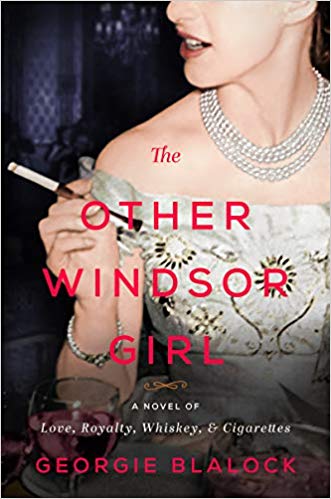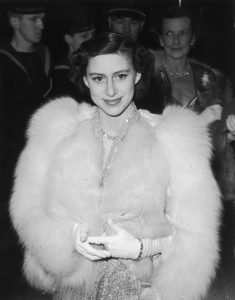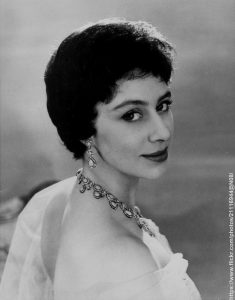 The Other Windsor Girl: A Novel of Princess Margaret, Royal Rebel by Georgie Blalock
The Other Windsor Girl: A Novel of Princess Margaret, Royal Rebel by Georgie Blalock Format: eARC
Source: supplied by publisher via Edelweiss
Formats available: paperback, large print, ebook, audiobook
Genres: historical fiction
Pages: 400
Published by William Morrow Paperbacks on November 5, 2019
Purchasing Info: Author's Website, Publisher's Website, Amazon, Barnes & Noble, Kobo, Bookshop.org
Goodreads
In a historical debut evoking the style of The Crown, the daughter of an impoverished noble is swept into the fame and notoriety of the royal family and Princess Margaret's fast-living friends when she is appointed as Margaret's second Lady-in-Waiting.
Diana, Catherine, Meghan…glamorous Princess Margaret outdid them all. Springing into post-World War II society, and quite naughty and haughty, she lived in a whirlwind of fame and notoriety. Georgie Blalock captures the fascinating, fast-living princess and her “set” as seen through the eyes of one of her ladies-in-waiting.
In dreary, post-war Britain, Princess Margaret captivates everyone with her cutting edge fashion sense and biting quips. The royal socialite, cigarette holder in one hand, cocktail in the other, sparkles in the company of her glittering entourage of wealthy young aristocrats known as the Margaret Set, but her outrageous lifestyle conflicts with her place as Queen Elizabeth’s younger sister. Can she be a dutiful princess while still dazzling the world on her own terms?
Post-war Britain isn’t glamorous for The Honorable Vera Strathmore. While writing scandalous novels, she dreams of living and working in New York, and regaining the happiness she enjoyed before her fiancé was killed in the war. A chance meeting with the Princess changes her life forever. Vera amuses the princess, and what—or who—Margaret wants, Margaret gets. Soon, Vera gains Margaret’s confidence and the privileged position of second lady-in-waiting to the Princess. Thrust into the center of Margaret’s social and royal life, Vera watches the princess’s love affair with dashing Captain Peter Townsend unfurl.
But while Margaret, as a member of the Royal Family, is not free to act on her desires, Vera soon wants the freedom to pursue her own dreams. As time and Princess Margaret’s scandalous behavior progress, both women will be forced to choose between status, duty, and love…
My Review:
Vera Strathmore may be telling this story, but it’s Princess Margaret who dominates every single page, just as she does Vera for ten of the best/worst/most notorious years of both of their lives.
This isn’t a complete biography of Margaret, nor is it intended as nonfiction. Not that the reader doesn’t wonder, every single step of the way, how much fact underlies the fiction.
After all, this was a storied life, conducted all too frequently in public, and most of the facts are known. Whether the author has captured the feelings behind those facts? Well, that’s something that the reader will have to decide for themselves.
But what we have feels like a peek behind the scenes of Buckingham Palace – or Buck Place as it is referred to in the book – into the life of Princess Margaret, the younger sister of Queen Elizabeth II, during Margaret’s glory years. The years when Margaret was to the post-war Press what Princess Diana became in the late-20th century – a source for endless photographs and reams of scandalous speculation and gossip, as well as a tear-jerker of a story of tragic romance.
The difference is that Margaret outlived her legend, while Diana never did.
But the times were very different. In 1949, when Vera meets the Princess, Britain is still languishing in the doldrums of post-war austerity. Unlike the US, rationing was still in force – and enforced. The old, privileged aristocratic way of life, so lovingly portrayed in Downton Abbey, was breathing its last – and Vera felt like her life was expiring with it.

Into the gloom of Vera’s life, as well as the gloom of post-war Britain, Princess Margaret, her outrageous bon mots and the larger-than-life antics of her “Set” blew through like a strong wind – a harbinger of change.
In the story, Vera served the Princess from 1949 to 1959. During that decade, Margaret went from the spoiled and self-indulgent but favorite daughter of the King to the disregarded and scandal-prone sister of the Queen. It’s no surprise that the years when Margaret is at her most sparkling are the years before her beloved father’s death.
And that she never manages to recapture that sparkle again.
Instead, we watch through Vera’s eyes as the Princess’ “set” breaks up and Margaret is increasingly alone. While the author never attempts to portray Margaret’s inner life, we see her actions, and their consequences, through Vera as she makes the Princess’ world her own – to her own detriment.
Because the Princess lives in a bubble of her own making. And when Vera, out of love and friendship, pricks that bubble even a little, she finds herself on the outside, alone and adrift, as everyone around her warned she would.
It’s only at that point that Vera finally takes her life in her own hands and forges her own path. A feat that Margaret, for all her privilege, never manages to achieve.
Escape Rating A-: I stayed up half the night reading this. It was like the best kind of gossip – compelling and absolutely fascinating from beginning to end, a peek into a world that I’ll never see in real life. At the same time, it also has the compulsion of driving by a wreck and being unable not to look. Knowing anything of Princess Margaret’s history we already know it’s a train wreck – but we can’t turn our eyes away as the vehicle – in this case Margaret’s life – crashes and burns.
I will also say that it is weird to see events that I remember contemporaneously being treated as historical fiction. Very weird. The whole idea that the 1960s have now become “historical” feels very odd indeed.
What everyone remembers of Margaret’s life is the irony factor in her tragic romance with Peter Townsend. In 1936, her uncle King Edward VIII was forced to abdicate the throne to her father, King George VI, because he wasn’t permitted to marry divorcee Wallis Warfield Simpson. The head of the Church of England could not marry a divorced person. By 1953, Margaret had dropped from being heir presumptive to the throne on her sister’s ascension to being fourth in line after Elizabeth, Prince Charles and Princess Anne. But she was still high enough in that line, and divorce was still so deeply frowned upon that her desire to marry the divorced Peter Townsend – was forbidden by both her sister the Queen and the Church of England.
I always found it ironic that Margaret’s eventual marriage to Antony Armstrong-Jones ended in divorce. In 1953 it was anathema for her to marry a divorcé, but by 1978 she had become one herself. In all likelihood, Margaret’s marital failure paved the way for the acceptance of the same by several of her royal nephews and nieces, including the Prince of Wales.

But Margaret in the 1950s is a compelling character who stands firmly at the center of this story – to the point where Vera and her own needs, wants and desires fade into the background – even for herself. We also see Margaret change from glittering to brittle as the spotlight moves away from her to her sister, the “perfect” Queen.
While Margaret had always been capricious and frequently cutting, the more she is pushed into the background the more she tried to escape that background by being as outrageous as possible – and the more those around her suffered for her whims and moods. Margaret is never a villain, but she is also never someone that Vera could or should rely on. Her whims could be cruel, and Vera and the other members of Margaret’s household were her closest and most frequent targets.
In the end, this is the portrayal of two women locked together in a crisis of their own making. The one who seemingly holds all the cards having less freedom than the one who initially feels like the dependent partner of a codependent relationship.
Margaret’s life was a train wreck, not all of it of her own making. And we can’t turn our eyes away.





















I always thought Princess Margaret has always been in the shadows and that she had a much more interesting life. I really need to read this book! Thank you for being on this tour. Sara @ TLC Book Tours